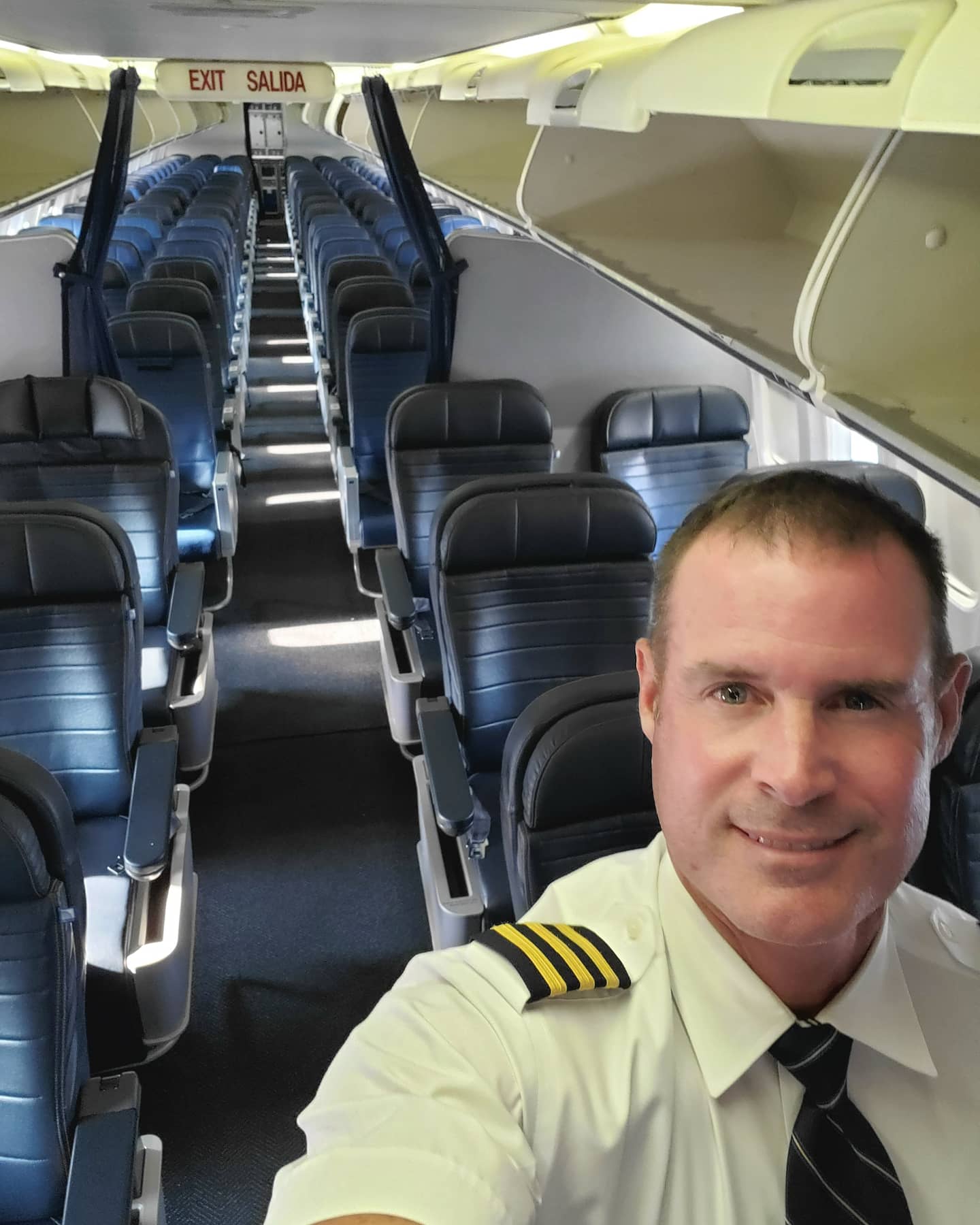
I never had any sense of acrophobia and considered myself decently comfortable with heights, but I could never comprehend those who are passionate about flying an airplane every day. Piloting is a profession that not only requires adapting to uncomfortable situations but also demands years of rigorous training. Some pilots have stated that they have spent as much as $80,000 on training for their commercial license and were required by the FAA to fly 1500 hours over the course of two years. This is a large commitment in a climate where airlines are facing volatile COVID-19 conditions and declining tourism across the country. You see many shocking examples like Delta Airlines, who have taken large hits with their adjusted operating revenue down 91% in June 2020 versus last year. To avoid layoffs, major airline companies are offering early retirement and buyout packages including Delta Airlines, who are currently negotiating with pilots to reduce their guaranteed minimum pay by 15%. With fleets becoming grounded due to these staff reductions, some pilots are having trouble with finding new side-jobs to stay afloat and sharpening their aviating skills to keep their certifications. What could a post-COVID situation look like for these current pilots and how will this affect future flight school attendance rates? I reached out to Jeff Hensley, a United Airlines Pilot, to get an understanding behind what pilots can expect during this pandemic.
Chris Riggins, a spokesman for the Air Line Pilots Association, has stated that pilots will “do anything we can by problem solving and managing risks to protect our families”. What professions have you seen grounded pilots switch over to effectively and what skills do pilots possess that are very transferable to other roles?
I’ve been a part of the airline industry through 3 major downturns since I first started with United in 1999. Each presented unique challenges, and those pilots impacted have reacted in a bunch of different ways. Of course, the most junior are those most likely to face a furlough so their challenges are often greater than those who simply must endure fewer upgrade opportunities, displacement from current seat and/or equipment or changes to work rules including lower pay. Of those furloughed, a fairly significant percentage were still in the Guard or Reserve and that often provides opportunities to go back on active duty. This was the case with me when I was furloughed the first time in 2003. Of course, we were engaged in both Iraq and Afghanistan at the time and recall opportunities were plentiful. I’m not sure that is the case today.
For pilots without the military option (or those whose reserve jobs can’t offer them active duty) the calculus is tougher. Flying spots are going to be few and far between and those furloughed earliest tend to grab what is available. Corporate flying is liable to dry up as the economy contracts. Regional carriers that are still flying often have flow through agreements for furloughed pilots from legacy carriers they are contracted with, but that is more of an option when an individual carrier is struggling and much less so when the downturn is industry-wide. I believe what we’ll see this time around is more like things were in the 2008/2009 recession when many pilots were forced out of the profession completely.
The challenges of changing careers are aggravated for many pilots whose skillset may be limited to flying airplanes. But when they start to see that experience from a 10,000 foot view, they will find much of it is very transferrable to non-flying careers. Commercial pilots are task-oriented people who manage a wide variety of moving pieces in order to maintain a schedule safely and efficiently. They must coordinate the efforts of a large team of in-flight crew, maintenance workers, customer care specialists, and ATC assets to complete the mission. Pilots often must engage their emotional intelligence and people skills to address an infinite number of human factors both within the team and with customers. A customer’s brand loyalty is often directly related to the personal experience they’ve had with a pilot. Pilots are skilled problem solvers, highly adaptive, and capable of being both leaders and supporting players. They are comfortable working with diverse groups of people and, above all, professional in their interactions. For some, additional training or education may be required for the transition to a nonflying career, but arguably, the most important determinate of their future success is those traits and skills they already possess.
Speaking more on those pilots currently grounded or being offered fewer hours, what are the requirements to keep your commercial license and is it hard to keep your aviating skills efficient during a forced grounding?
Pilots have a requirement to have at least 3 landings every 90 days in order to maintain currency. There are also required continuing qualification events that are unique to each carrier, but overseen and approved by the FAA. For instance at United, we have continuing training in emergency procedures, systems understanding, non-normal situations, and infrequent flight maneuvers/profiles that we train to in a simulator for several days every nine months. We also have quarterly computer-based training that covers operational issues as well as emergencies and systems. Finally, we have operational directives, pilot bulletins, and recurrent safety publications that are distributed to us as needed, but generally several each week. So there is a continuous focus on maintaining our knowledge base and focus on safety.
The question of proficiency is a little more nuanced. You can be safe without being proficient although clearly we always want both. However, the reduction is flights has created situations where pilots aren’t flying nearly as much as we did before the coronavirus hit. The union and the company have been very proactive about offering additional training when required, but the primary responsibility for identifying proficiency issues outside of regularly scheduled training events, lies with us. If we recognize a lack of proficiency, it is incumbent on us as professionals to seek out additional training opportunities. I have noticed that everyone has become even more methodical and diligent in our operational environment now that flight schedules are reduced. I don’t think anyone ever views flying as routine, but we all recognize that the typical threats we face in this environment are potentially increased by a lack of proficiency.
With the CARES Airport Program expiring October 1st, do you see increasing layoffs amongst pilots moving forward or could increases in foot traffic stop this?
I think furloughs at this point are inevitable without an extension of the PPP act. Most of the legacy carriers I’ve seen are estimating anywhere from 20-35% of the pilot seniority lists are vulnerable. I definitely believe an increase in traffic could lessen the numbers but I also think we’re years away from seeing the kind of flying we did before this thing. Leisure bookings will no doubt improve significantly once there is a viable treatment and vaccine, but I thing business travel will lag for a very long time, if it ever reaches pre-COVID levels. Many companies have been operating with remote workers now for 6 months and learned it’s definitely cheaper than flying their people all over the country. Can Zoom replace business done face-to-face? No, not entirely. But it can replace a lot of it. That will depress business travel for years I fear and likely lead to a permanent reduction in the overall pilot workforce.
Is there any optimistic news that you would share with a new flight school student who might be very nervous with the market demand for pilots?
For a brand new aviator who is hoping to make a career out of flying airplanes, the good news is this: in general, pilots are old and getting older. With a glut of pilots, there is little incentive for airlines or the FAA to attempt a change in the mandatory retirement age. That means the Boomers won’t be flying for more than 8 or 9 more years. That’s a significant number of pending retirements and lots of opportunities for those just starting their careers.
Laura Einsetler, an aviation blogger and commercial airline pilot with 30 years’ experience, has stated that the effects of 9/11 were massive and “even though the airplanes were only grounded for five days, the ripple effects lasted over a decade”. Is there any lasting effects or procedures we could expect due to COVID-19?
I’d refer to the previous question about the changes in how business operates as one notable change that will have a long-term impact on the industry. But I also believe the airlines are going to evolve and adapt SOPs that meet customers’ demands for safe, affordable air travel that protects public health. We’ve already seen drastic changes to airline operations that leave me feeling much safer when I’m deadheading in the back now than when I visit a local grocery store. Seating configurations have changed, deep-cleaning protocols are standard, and masks are required. None of these will likely to go away when COVID-19 finally comes under control. So our awareness of communicable diseases and actions to minimize transmission will be heightened for a very long time to come. That’s a good thing.
But people are social creatures and people love to travel. They will always want to get on an airplane as long as they believe it is safe to do so. The travel experience will no doubt look different in a few years than it does now (and much more different than it did before COVID-19), but there will still be airplanes and people wanting to fly.

